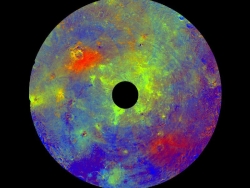Recent results from the Fermi Gamma-ray Space Telescope have found no evidence of dark matter, a result in some conflict with data obtained from several underground research detectors.
The uncertainty of science: Recent results from the Fermi Gamma-ray Space Telescope have found no evidence of dark matter, a result in some conflict with data obtained from several underground research detectors.
The mystery here is that there is no doubt that something causes the outer objects in galaxies to move faster than expected. Scientists have labeled this something as dark matter, guessing that some undetected and unknown mass exists in the outer reaches of galaxies, thereby increasing the gravity potential and hence the velocity in which objects move.
The problem is that they have yet to identify what that dark matter is.
The uncertainty of science: Recent results from the Fermi Gamma-ray Space Telescope have found no evidence of dark matter, a result in some conflict with data obtained from several underground research detectors.
The mystery here is that there is no doubt that something causes the outer objects in galaxies to move faster than expected. Scientists have labeled this something as dark matter, guessing that some undetected and unknown mass exists in the outer reaches of galaxies, thereby increasing the gravity potential and hence the velocity in which objects move.
The problem is that they have yet to identify what that dark matter is.

